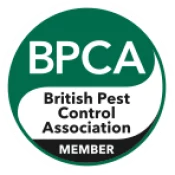Carpet Beetle Pest Control Services

Carpet Beetle Pest Control Services
Carpet beetles are often mistaken for bed bugs, but the big difference is that they do not feed on blood. Instead, these pests feed on natural fibres such as wool, silk, leather and fur, causing damage to carpets, rugs, clothing, curtains and upholstered furniture. Left untreated, an infestation can result in significant and costly damage to your home or business.
At iX5 Pest Control, we provide safe, effective and discreet treatments to remove carpet beetles and their larvae; while also helping you prevent future infestations.
Why carpet beetles are a serious problem
- Damage to natural fibres: Carpet beetles feed on wool, silk, feathers, fur, leather and even stuffed taxidermy. Carpets, clothing, soft furnishings and upholstery are at risk.
- Larvae do the most harm: The larvae (often called “woolly bears”) are 4–5mm long and cause most of the damage by chewing through fibres as they grow.
- Health & hygiene concerns: Carpet beetle larvae shed hairs that can trigger allergic reactions, skin rashes or breathing issues in some people.
- Difficult to spot: Adult beetles are only around 3mm long and resemble a small (but different coloured) ladybird. The real giveaway is damage and shed larval skins.
- Long-term infestations: Without treatment, populations build gradually, and the repeated damage can result in threadbare patches around carpet edges, ruined clothes and costly repairs.
iX5 Pest Control
- 7 Days A Week Service
- Weekend & Evening Appointments
- Domestic & Commercial Pest Control
- Contactless Payment Methods
- Free Initial Survey
Additional Services
Signs you have carpet beetles
- Threadbare patches in carpets, often along the edges of rooms
- Irregular holes in clothing, upholstery or curtains (especially wool or silk)
- Light brown shed skins from larvae moulting, often found near skirting boards or in cupboards
- Adult beetles spotted near windowsills as they are attracted to light
- Unexplained damage to stored fabrics or natural material
The carpet beetle lifecycle
Understanding their lifecycle explains why infestations cause so much damage:
- Eggs – Laid in cracks, crevices, or directly on natural fibres.
- Larvae (woolly bears) – 4–5mm long, brownish and hairy; feed on natural fibres and cause the bulk of the damage.
- Pupae – Transform into adults within hidden fabrics, floorboards or furniture.
- Adults – Small (about 3mm), round and patterned like a tiny beige / grey ladybird. They live outdoors as well as indoors, but lay eggs inside where fibres are available.
A single female can lay dozens of eggs, so populations can expand rapidly.
Our carpet beetle control process
- Initial survey
We assess the extent of the damage, identify carpet beetles or larvae, and locate likely sites of activity. - Targeted treatment
Treatment usually involves an application of residual insecticide to key areas, but can sometimes include use of steam too. - Proofing & prevention
Whilst it is almost impossible to prevent carpet beetles entering your home or workplace, we provide practical advice on cleaning, storage of natural fibres, and other appropriate information. - Follow-up checks
Where necessary, we schedule revisits to monitor activity and ensure the problem has been fully resolved.
Seasonal advice
- Spring & Summer: Adult beetles are most active, often flying indoors through open windows. Keep an eye on windowsills for activity.
- Year-round: Larvae continue feeding and causing damage inside homes, especially in warm, undisturbed areas such as cupboards, under furniture and along carpet edges. Regular vacuuming and inspection are key to prevention.
Immediate steps you can take
- Vacuum carpets, skirting boards and furniture regularly, especially along edges and under heavy items.
- Wash or dry-clean infested clothing and soft furnishings.
- Store woollens, silks and natural fibres in sealed containers or bags.
- Inspect stored fabrics, rugs and curtains periodically for signs of damage.
For related infestations, see our moth pest control services and bed bug pest control services.
Why choose iX5 Pest Control?
- Qualified, insured & BPCA-certified technicians — with TrustMark registration
- Local experts who understand seasonal pest pressures across the region
- Safe, effective treatments tailored to your property and furnishings
- Transparent, fixed pricing — no hidden charges
- Tailored advice to protect your belongings and prevent recurrence
- Written Reports after every visit

Service areas
We provide carpet beetle pest control across Northamptonshire and beyond, including:
Northampton, Milton Keynes, Daventry, Rugby, Market Harborough, Towcester, Brackley, Wellingborough, Kettering, Corby, Olney, and all surrounding areas.
Get in touch
Noticed damage to carpets or soft furnishings? Call us today before the problem spreads further.
Call: 01604 328545
Email: [email protected]
Or use our simple contact form below.
iX5 Pest Control – Trusted with results!
Carpet Beetle Pest Control FAQs
Most frequent questions and answers
Are carpet beetles the same as bed bugs?
No. Carpet beetles do not feed on blood. Instead, they feed on natural fibres like wool, silk and fur.
How do I know if I have carpet beetles?
Look for threadbare patches in carpets, holes in clothes or curtains, and shed larval skins near skirting boards.
Can carpet beetles damage synthetic fabrics?
They generally prefer natural fibres but may still damage mixed fabrics or attack padding that contains natural elements.
Will carpet beetles go away on their own?
Unlikely. Infestations tend to get worse over time as larvae continue to feed and adults lay more eggs as long as there is a food source.
Are treatments safe for my home?
Yes. All treatments are selected to be safe for households and pets when applied by professionals.
Do carpet beetles bite?
No, they don’t bite. However, the hairs shed by larvae can irritate skin and cause allergic reactions or rashes in some people.
What do carpet beetle larvae look like?
They are about 4–5mm long, brownish, and hairy — often called “woolly bears”.
Can carpet beetles live in mattresses?
They can live in or on mattresses containing natural fibres but are unlikely to be found on mattresses that do not contain natural fibres.
How quickly can an infestation spread?
Because females lay dozens of eggs and larvae can feed for months, infestations can build up gradually and cause extensive damage if untreated.
How long does treatment last?
Most infestations can be brought under control with one or two treatments. We also provide advice and follow-up visits if necessary to prevent recurrence.










